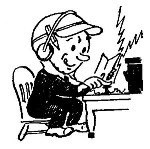CQ is ham-speak for “calling any station”. For all modes— voice, Morse, visual, or digital, it signifies a radio amateur looking to make a contact.
The basic, general CQ means looking for any station to respond.

It can be refined (a directed CQ) to be more specific, often a location. Common examples are out-of-country long distance (CQ DX), a particular prefix, country or state (CQ VT), a contest or event (CQ SOTA), or perhaps a CW specialty such as using a straight key (CQ SKCC).

When you hear a station calling CQ, it’s your chance to work them. Respond by sending their call sign and then your own, much like on a VHF/UHF repeater.

If a ham doesn’t hear any activity or anyone calling CQ it could mean the band is dead… or it could be a good opportunity to go fishing for a contact by calling CQ. New hams should get some experience with every new mode before calling CQ themselves.
When calling CQ , make sure that you are permitted to operate on the frequency you have chosen (and keep away from band edges). Also make sure that the frequency is not in use. Do not assume that if you hear quiet at a valid frequency that it is free; it could be that another ham is listening to a station you can’t hear.

Always check if a frequency is in use before calling CQ. The proper way to do this is to simply ask by voice with your ID (phone), or send the Morse prosign QRL? with your call (CW mode).

If someone else is working that frequency, they will let you know. Move to another frequency (QSY) should you receive a response to QRL.

If nobody replies to your QRL, go ahead with your CQ. There is no official CQ protocol but there are many suggestions out there. Continue reading
